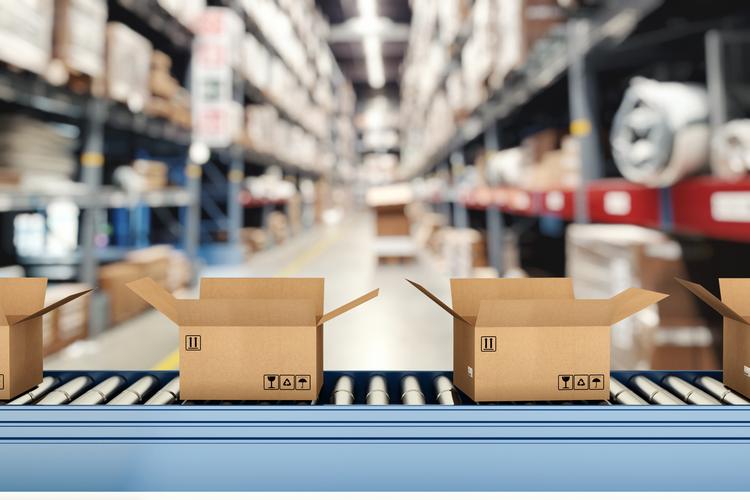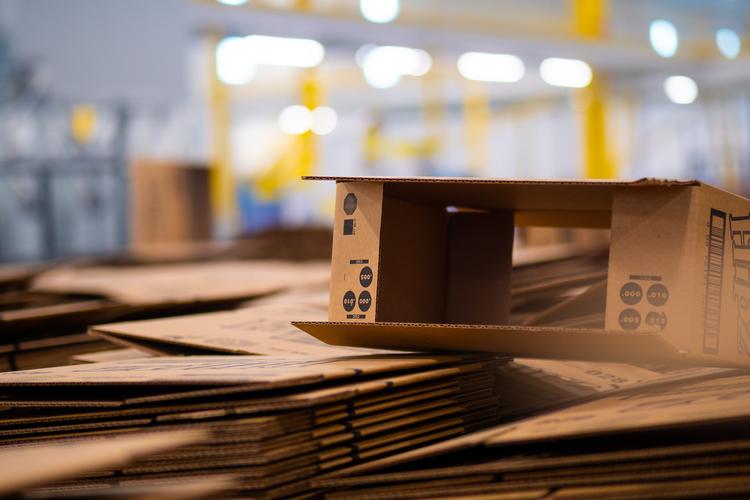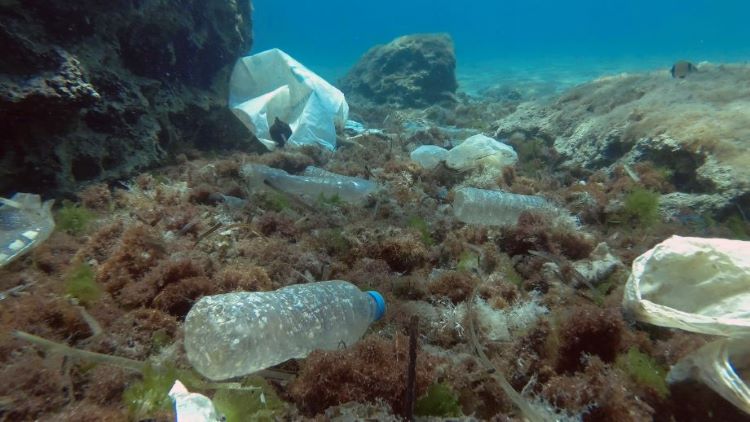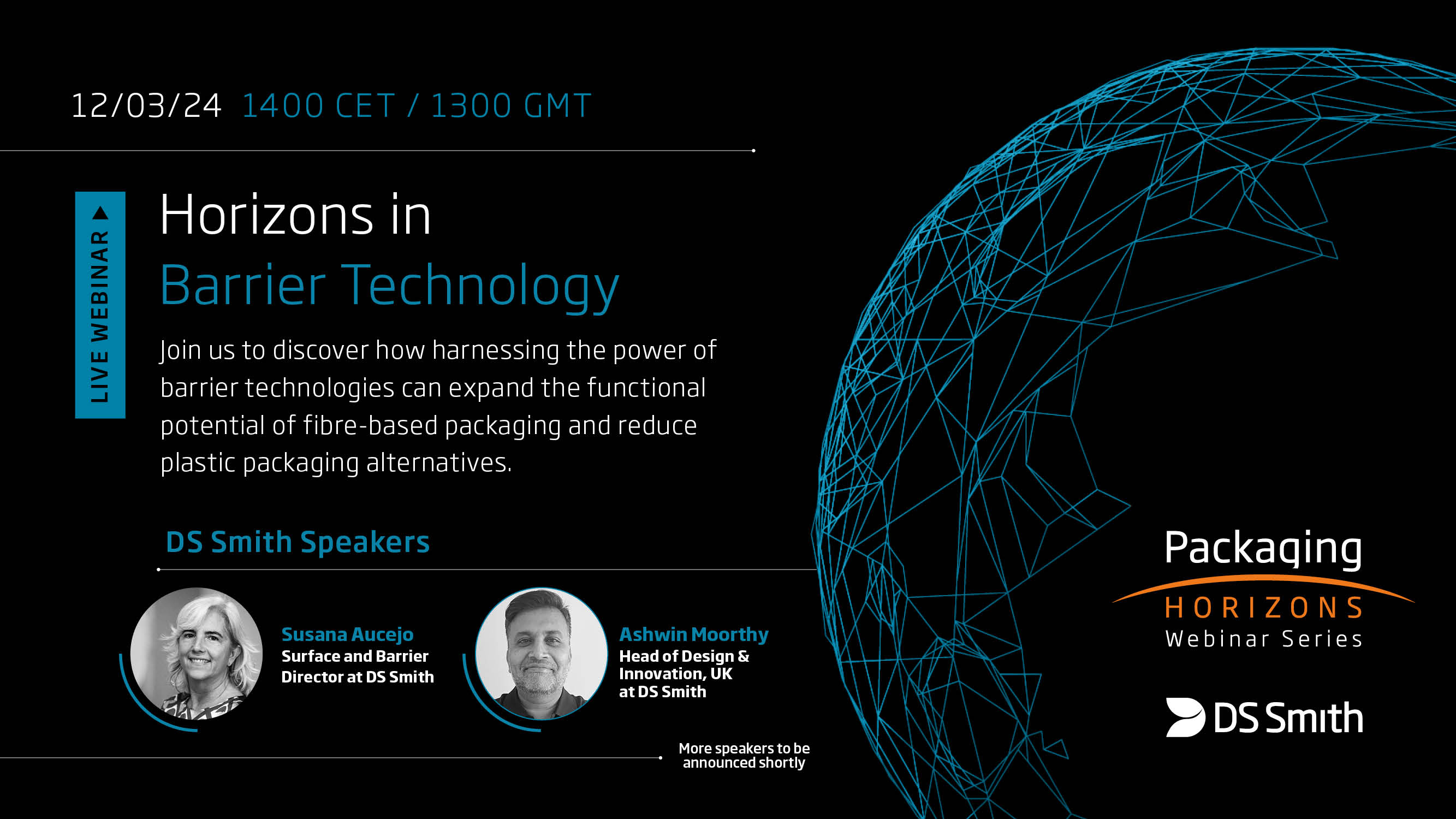Innovating in Barrier Technology

About Susana – Susana joined DS Smith in 2019 and is a packaging specialist with more than 20 years of industry experience.
Keeping materials in circulation
Fibre based packaging has the highest recycling rates of any packaging, and therefore is the ideal choice for brands looking to make their supply chains more sustainable. At DS Smith our box-to-box circular business model means that we can recycle cardboard and use its fibres in new packaging in just two weeks. Additionally, we’re able to recycle fibres up to 25 times, making sure we keep materials in circulation for longer.
Of course, other materials have alternative properties, such as plastic being able to keep food fresh for long shelf-life applications and act as a barrier to liquid. It’s important that we harness these useful properties in cardboard packaging and ensure our cardboard boxes are as strong as possible, to reduce the number of hard to recycle plastics in circulation and prevent further plastic litter making its way into the sea. Following the recent global push to reduce plastic pollution in our oceans, there could not be a more pertinent time to ensure that we are eliminating hard-to-recycle plastics.
Supplementing fibres to make products stronger
Barrier technology development and innovation is pivotal to this effort of using fibre-based packaging to replace hard-to-recycle plastics. Innovations in surface treatments, coating formulations and technologies of application are key to developing recyclable corrugated board boxes able to contribute to the reduction in the use of plastic. This involves supplementing fibres to make products stronger and water-resistant to emulate the properties of plastic packaging.1
Finding the right fit
Protecting goods in transit from when they enter a box in the supply chain to the point of delivery to the customer is essential. But not every journey is the same. It is key that the right barrier is used on each box, to optimise it for performance and sustainability. From how it is applied, its efficiency, to considerations such as how easily it allows the board to be folded into a box – designers must take everything into account.
Through the supply chain, boxes can be subjected to various pollutants, such as water, humidity, and grease. All of these can cause damage to the packaging and its contents if not adequately protected.
The challenge lies in which material is used to manufacture these barriers. DS Smith harness the experience and expertise of our designers to optimise packaging barriers for recycling. If a traditional plastic solution is to be used, this should be fully recyclable or have properties that allow the plastic to break down in the recycling process. At DS Smith, our threshold is that a conventional plastic barrier should make up no more than 5% of the box’s content, otherwise this will reduce its recyclability.
 Sustainable lamination technology is one possible option for fibre solutions that could replace hard-to-recycle plastics in packaging in traditional or e-commerce channels. A thin plastic layer can be laminated on top of the fibre board, and we can ensure that this constitutes less than 5% of the box. There are also alternatives of non-plastic materials for lamination giving barrier properties for certain applications.
Sustainable lamination technology is one possible option for fibre solutions that could replace hard-to-recycle plastics in packaging in traditional or e-commerce channels. A thin plastic layer can be laminated on top of the fibre board, and we can ensure that this constitutes less than 5% of the box. There are also alternatives of non-plastic materials for lamination giving barrier properties for certain applications.
Ongoing innovations
DS Smith’s R&D team have created a further innovative barrier option which uses biodegradable and water-soluble polymers to protect a box on its journey to the customer. These can be separated from the recyclable fibres during the recycling process. Therefore, these plastic alternatives could in theory constitute more than 5% of the box if necessary, as the consumer is not being relied on to make the separation. Using recyclable plastic alternatives is beneficial for the environment as it means that hard plastics are removed from circulation, and the adoption of biodegradable fibres means that there is less contamination in the recycling process.
In other instances, the plastic layer can be eliminated entirely using a substitute such as coating or varnishes. Different formulations of coatings are under investigation at DS Smith’s R&D Programme. These coatings are robust to protect the box, whilst also working towards 100% recyclability – and a circular economy.
Long term goals

As we look to the future, our R&D team continues to put sustainability at the heart of our innovation process, aligning with DS Smith’s Circular Economy led Now and Next Sustainability strategy which pledges to offer all customers 100% recyclable packaging within two years. As part of our £100 million R&D investment, a key focus of ours will be accelerating research into new materials, including expansion of barrier technologies which can be utilised in packaging.
The options for barrier technologies continue to expand and fibre-based solutions are challenging the misconception that plastic is the best protection for goods in transit. Not only can they provide proper protection, but their recyclability makes them more sustainable too.
Click here to sign up for the Horizons in Barrier Technology webinar

